
Visions of Mana Review
The Mana series has seen a new lease on life in the 2020s. Trials of Mana’s remake was a fun innovation on a classic Super Famicom title only really hampered by its budget, while the Legend of Mana remaster might sit among one of the best re-releases in Square’s massive catalog. Visions of Mana shows Square isn’t satisfied with just dwelling on the past, being the first new mainline game in the franchise since Dawn of Mana nearly twenty years ago.
Every four years people from all over the world are chosen as Alms in association with one of the key elements, guided by a Soul Guard to take a pilgrimage to the Mana Tree. There are eight elements in total, each related to a major region. When the pilgrimage reaches the Mana Tree, they offer their souls so the planet’s source of Mana can keep the planet going. If an Alm fails to make the pilgrimage, their hometown will be destroyed from the lack of Mana. The world is fragile, and the cycle is the only way to keep the world going. Val and Hinna from the Fire village of Tianeea are deemed the Soul Guard and Alm of Fire respectively. From here Val needs to travel the world to gather the alms in a story that will have him questioning his role in this tradition.
To be frank and rip the bandaid early, I don’t think any individual component that Visions brings to the table is breaking new ground. The story is solid, the quests are simple, and combat is fun but not leading-edge. What it seeks to do instead is iterate, to cement the ideas Trials of Mana had into a solid identity for the series to take a run with. You may hear a lot of people describe Visions of Mana as a “PS2 game” but if I were to view that in the best possible faith, I understand why. So much of this game, from the dialogue to story progression feels right out of Square’s classic era of RPGs. It feels nostalgic, making me realize that this kind of fun globetrotting RPG adventure isn't often made anymore. Outliers exist, of course, but there’s a specific rhythm and style at play here that I don’t think I’ve seen in years. It doesn’t feel cynical either, it feels like they tried to make a classic Mana story for a modern generation.
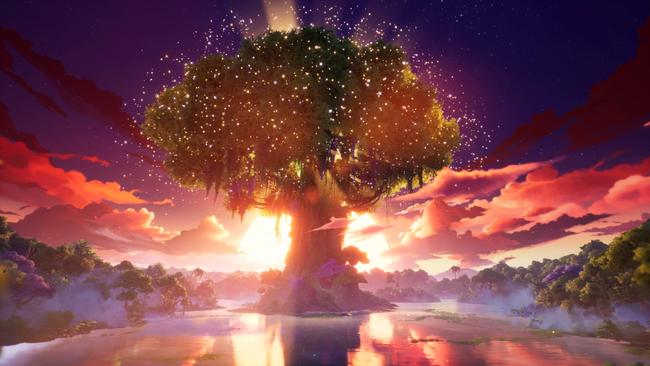
The combat seemingly builds off of the Trials of Mana remake. Your active party consists of three characters, but this time each can switch between up to eight classes and three different weapon types. Classes are associated with elemental vessels, and only one character can equip a particular vessel at a time. One vessel will give a unique class to any character who equips it, even if those classes would all have the same element. There are plenty of reasons to mix up who uses what vessel based on your preferences and who you feel serves that specific role the best.
This makes your party members feel more dynamic than in Trials, even if it comes at the cost of more strict character progression. The flow of battles feels similar as well, with a dodge, jump, two different attack buttons, and a series of skills you can map to face buttons. The key difference is that everything just feels better. Your actions feel faster, attacks less stiff, your buttons feel better, and the animations flow between one another so much better. It’s a night and day difference, with the Game Feel being closer to meeting a AAA standard than Trials was ever able to pull off. I’m a simple man when it comes to enjoying an action game, and my buttons feeling good is a big part of getting me to enjoy one.
The game starts very easy and mechanically simple, deceptively so. Your combo strings start very basic — one combo with the normal attack button and some extra attacks with the other — and your classes are drip-fed to you over a long period of time. I was shocked to see how many hours early on Visions leaves you with three characters and only two elemental vessels. One of your characters necessarily will just be stuck in their basic class while the others get more options in battle, it almost feels like the game is taunting you until you get your fourth party member and third vessel. Once I did get enough vessels to have the entire party able to utilize the game’s job system, I was still struggling with the combo strings, however.
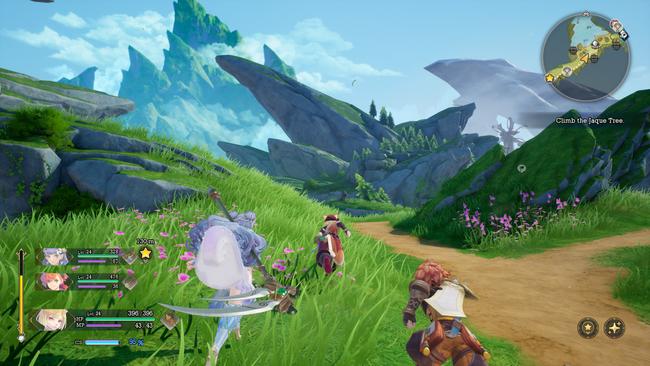
Over time I noticed my initial annoyances with combat began to fade, but I was unsure why for a while. The game’s combat started to click, almost out of nowhere. I took a look at the linear skill trees for each class, and I realized that at least the first skill in all of them unlocked a new combat action for the weapon the class was associated with. Each character can use three weapon types, and any new moves acquired from one class carry over into any other class that uses those same weapons. Those additional actions are what I was desperate for early on; the ability to hold or even delay your button presses to use different moves in combat? Launchers, charge attacks, and more were now available to my entire party. Your kit is built slowly as you play, by unlocking and training new classes as you acquire them in the story. Those buttons that felt good early on feel even better the further you get into the game. The build-up to a more versatile combat system is mostly front-loaded, and I do wish you could unlock even more new moves later into the skill tree, but your weapons by endgame have enough going on in my opinion to keep battles consistently engaging. If the demo didn't impress you, just know that the early game unfortunately does not leave the best first impression.
Each of the characters is enjoyable in their own way once you start to experiment, but I’d say that by the end I stuck with Val (who is not mandatory to keep in your party at all times, by the way), Morley, and Palamena. Val’s lance, Morley’s katana, and Palamena’s… everything were consistently fun and would bring me victory time and time again. Messing with my team composition and finding which combinations of three characters had the best synergy is a great way to make your own fun with the game too. Careena is about as flexible as Palamena in her skill set, and I particularly loved making her a lancer and a monk. Her lance attacks have an elegance to them that is always fun, contrasting her monk-like classes where the focus is more on pummeling and juggling. Julei might not have been the best from my experiments in doing raw damage, but his healing and spell potential seemed high if you want to run magic builds for your active party. They all work, and there’s no wrong answer here in my testing.
Class progression, outside of gaining those new actions and abilities, will largely give you passives for that class or new spells to cast for that character regardless of if you are playing with that class. You advance your class by spending points obtained on the field by attuning to elements of vessels you’ve already obtained, giving players a reason to both explore and revisit old maps. The passives are slight, but do distinguish different classes that share the same weapon. Regularly switching characters between classes is mainly a way to get different passives, stat preferences, and vessel attacks.
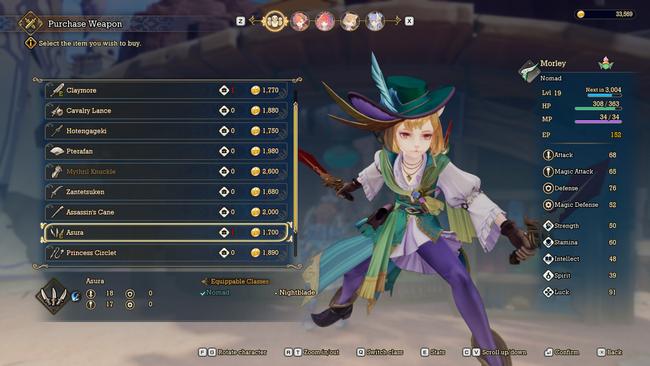
Your main combat options are two attack buttons, an ability wheel that you can program with four skills, elemental vessel attacks, and class strikes. When all this comes together, there’s just a lot of things you can be doing at all times, which flows together really well. Class Strikes are your special moves, typically shared amongst weapon types but with variants depending on the element associated with the class. There’s a meter you can unlock later in the game relating to your vessel attacks that build over time, and when it fills you can charge your vessel to cause an effect that fills the entire arena. It makes the battlefield chaotic, with some of them being so powerful it can melt boss health bars like they’re plastic.
Visions of Mana’s overall difficulty stood out to me, because it’s ideal for an action RPG. Visions seems to be intended for an audience of more than just action game enthusiasts, and it takes its time slowly introducing players to how complex the battle system can get. The difficulty setting can be switched whenever you wish, and I switched often between normal and hard. Most of my time was spent on Normal, and I’m happy to say I think most players will be satisfied by it. Encounters are balanced around doing side content, and I rarely felt like exploring and engaging with the game made me overpowered. Where it counts, Visions knows when to turn up the heat.
I’m not the kind of person who needs every action game to have the depth of Devil May Cry, but my initial worries about Visions’ combat being simple were thankfully shortsighted. There are so many things you can do with your characters in this game, but for more casual players, most are not needed for a Normal playthrough. Ability Seeds can be equipped on each character to modify stats or give them new skills. Some can even give you massive buffs with adequate trade-offs. The game will let anyone hit credits with a bit of work, but it silently begs enthusiasts to do a hard mode run. End-game content on Hard demands mastery of just about everything. You’ll need to build your team properly, consider elemental weaknesses, optimize your ability slots, and probably even more I haven’t thought of. There’s so much to juggle even as a Normal mode playthrough reaches its conclusion that I think it’ll make even the most casual player want to embrace the mechanical depth of an enthusiast player. That’s the kind of depth I love in an ARPG: Not all necessary, but there for the real sickos to chew on.
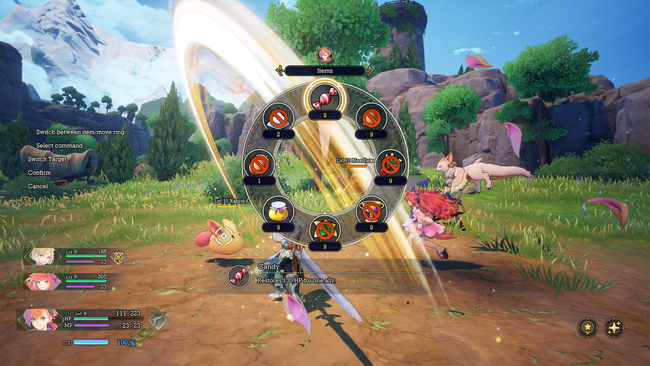
It’s always fun to fight normal enemies out on the field, but boss fights are where the game truly is at its best. There are so many incredible boss designs here, all with fun patterns to learn. Like with Trials, they end up playing out like the ARPG equivalent of MMO battles. They telegraph their attacks with AOE markers, requiring you to be on the move and switching between characters to keep your party optimally dealing damage and staying alive.
Having said that, I think party AI has improved substantially over Trials. I remember my party members standing around during tough boss fights getting hit by telegraphed attacks that should have been easily avoided. This time, not only can you modify your party member’s AI on the fly by going into the pause menu in battles, but the default AI for each character can carry you to the end with little issue. They will probably still get hit by AOEs on occasion, but companions will more readily contribute to battles in meaningful ways. I know a handful of times the slow motion camera zoom on defeat would reveal that a character I wasn’t controlling landed the finishing blow, and I was always happy to see it. You can set how aggressive they are, how safe they are, how often they should use items, when they should stop, and more. Switching between characters in a boss fight no longer feels like switching roles to pick up the slack, it’s fantastic.
Like many prior Mana titles, you are limited to the number of consumable items you can bring into battle with you to a specific amount, typically around nine. The intent is for items to give you some wiggle room in your recovery options, but you shouldn’t be relying too much on spamming recovery items to make up for bad play. When things really get difficult, you can’t fall back on items to get you through bad decision-making or attack pattern recognition.
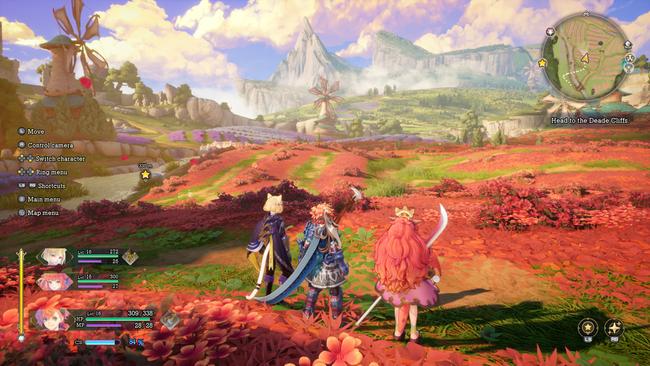
Unfortunately though, items happen to be probably my biggest singular gripe with Visions gameplay. I don’t know if this is a PC-exclusive issue, a bug, or an inconsistent cooldown mechanic that was explained poorly, but often I’d notice characters would just not use items when I’d select them. There seems to be no UI indicator that using items works on a cool-down system. Sometimes I’d be able to use two revival items back to back with no issue. Sometimes any item would take about five seconds to be used after queuing it up. To be clear, I wouldn’t have an issue at all if items did work on a well-telegraphed cooldown, because that restriction could be engaging. However, when you’re fighting tough bosses and trying to keep your team alive, ideally you want items to behave consistently, and it wasn’t always clear when an item was actually used or not. Again, I’m not sure if this is a bug or some underlying limitation I’m misunderstanding, but either way, hopefully, it can be adjusted in some manner.
I’m a pretty open-minded guy, willing to give games the benefit of the doubt more often than not. But this sometimes leads me to disappointment when I feel a game doesn’t follow through on its otherwise evident potential. I often feel that games don’t end with giving their best foot forward, but instead peter out mechanically to limp to the finish line. In Visions of Mana’s case, even though I do have some issues with some reused content at the end, the mechanics only improve the more you play. I couldn’t be happier; it genuinely surprised me in all the best ways. What started as mild enjoyment ended with rabid enthusiasm. I don’t get sucked into games like this often, but Visions of Mana gave me brain worms. As I write this, I’m contemplating a New Game Plus run on hard, because I just need to get back in there and see what this game is truly capable of.
I’m glad to say that Visions is so much more than just a fun combat system, with breathtaking world design keeping your pilgrimage fresh. The environments in this game are true works of art, some of the best of any game published by Square this generation.isions’ environments are likely to be talked about for years to come. The team at Ouka Studio spared no expense for them, and they were so stunning that it made the solid 3D character models stand out by comparison. The world was clearly the focus of this game, and it showed. This world feels alive, and it depicts nature in a way Mana hasn’t been able to capture since the 2D sprite days. Fields are expansive, some even featuring farms or small houses with NPCs out and about. The skyboxes are hand-drawn art pieces, so gorgeous that I would often just stand there staring at them. I distinctly remember an area early on where I could see individual blades of grass carried by the wind. It blew my mind to see so much attention to detail in how they chose to depict nature. If you geek out about environmental design in games like I do, you’re going to love the artistry on display everywhere you go.
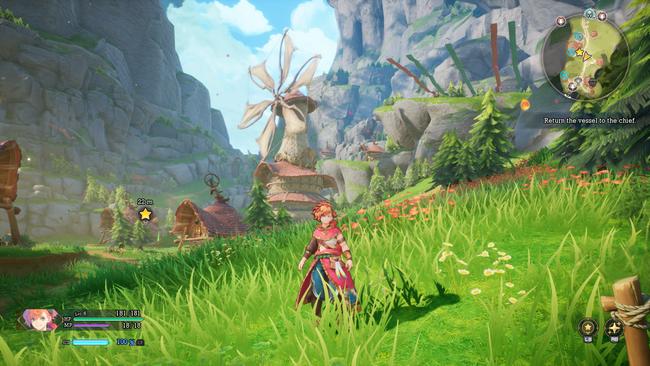
Traveling through these lands is satisfying, with game progression most comparable to MonolithSoft’s Xenoblade series. Your path through these maps is always functionally linear, but there are several secrets to find all over for those who want to look for them. An interesting aspect of Visions is the fact that anything interactive on your map that you can currently use is highlighted with a blue dot, telling you where to go. I’m a bit mixed on this, but I think it works best to highlight what aspects in old maps are accessible with tools you obtain later in the story. I don’t think the maps are as expansive as some other RPGs, but they’re pretty large and densely packed with plenty of things to do. There are also several ways to traverse them thanks to your elemental vessels allowing you to grapple hook, manipulate time, create platforms out of water, shoot yourself up in a gust of wind, and more.
Side quests are found on the field or in towns, and they’re pretty standard but strong overall. There are also quite a lot of them, with them updating in towns regularly, incentivizing you to fast travel back to previous towns often to see what’s been going on since you’ve been there. The quests themselves boil down to fighting a group of enemies or obtaining items on the field. The only exception I can think of is a specific long-running side quest chain involving finding scenic views based on paintings, which is probably one of the best in the game. The writing is especially good in these quests as well, and I think all the quests have charming dialogue. The quest writing reinforces that the main cast naturally enjoys helping people, and the quests where they talk with people in need are among the strongest. I’ve noticed that people tend to not enjoy this kind of simplistic, checklist-style side quests in RPGs, but I don’t think this is an all-or-nothing metric to judge side quests by. Traversing the world and battles are already satisfying, so I love any chance to just do more of that.
One thing I’d like to see in a patch at some point is the ability to track multiple quests at once, or to maybe be able to open your menu when you’re traversing the overall on water or in the sky. I would often do side quest cleanup in these modes, but pausing the game doesn’t let you go into the usual menu to check side quests or update your characters’ classes and gear. So if you want to change your active side quest you’ll have to land, open the menu, and then get back on your animal friend to then be able to go track it. You can skip some of the animations that transition you to the overworld, but it’s still a good amount of time spent waiting.
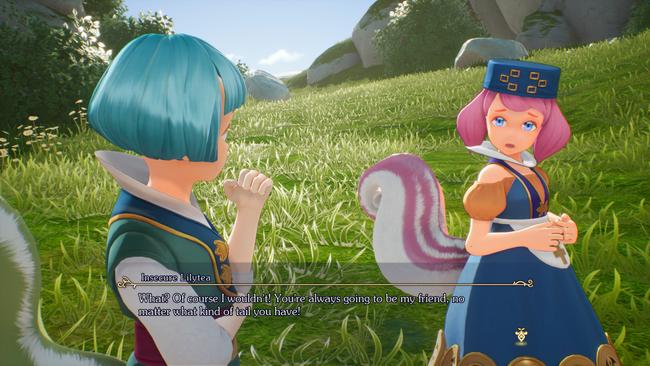
In towns, you can also visit shops and talk to basically every NPC around to get added flavor text on the state of the world. Mechanically towns are for buying items, but I don’t think the economy is that balanced. I ended the game with far too much money than I knew what to do with and characters frequently telling me to go spend it at the end of battles, yet there’s not really much to buy outside of some gear and expendable items. I was typically able to buy one of every new weapon, and the latest armor for each character every time it was updated in shops with plenty of extra money to spare. At a certain point in the game, Val can turn enemy essences, known as corestones, into ability seeds at a certain shop but you probably won’t need to do this unless you’re playing on hard. I don’t think this is a bad thing, but I do wish there was more you could do in towns. A forging system for weapons would be a neat way to spend your extra money, but that’s wishful thinking.
Visions’ story starts unassuming, with large segments of the introduction dedicated to setting up a pretty standard RPG Adventure. The characters are all nice people who wish to help those around them, being at worst just a little sassy but still well-meaning. There isn’t much interpersonal friction amongst the group, and when it does happen it doesn’t last long. This just isn’t that kind of story. Mana stories are often full of silly moments and cheery characters, so I didn’t really expect to have my worldview challenged or anything like that. I do like how its premise inherently tries to interrogate certain themes the series is known to dabble in, like the idea of humans needing to sacrifice themselves for a greater power. I think what it lands on is strong, and while I’m not blown away by the story, the cast carried me through it. They’re a fun group to spend time with, you’d probably have to be heartless to not be endeared to them by the end. The writing also took me aback at moments with at least a few brilliant emotional gut punches, bringing me to tears at least twice across my playthrough. Bravo, Visions of Mana. You have a good heart.
I played on PC, and felt the experience was pretty stable overall. The port itself lacks graphical options however. You can modify the resolution, framerate, set VSync, apply/modify AMD FidelityFX Super Resolution 2 upscaling, and change the graphic settings. That last option does not take you to any kind of extra customization menu, it’s just a toggle between Low, Standard, and High. I played the game at 120 FPS, with AMD upscaling turned off, and Graphics set to high, and was able to mostly maintain a consistent framerate with the exception of busy battles dropping to 60 fps. Weirdly, cutscenes seem mostly locked to 30 FPS which led to a jarring experience whenever I’d finish a story battle. There are some in-engine scenes that keep with your set framerate cap, but usually, these will harshly lock to 30. I’m sure they’re hard-coded to work like this (many games do this), but if you’re sensitive to drastic framerate shifts keep that in mind.
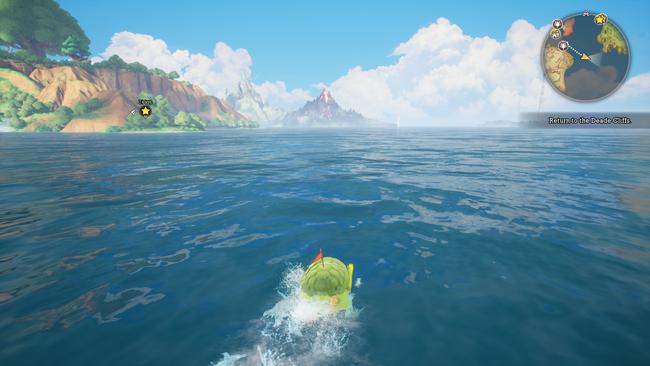
Additionally, if you were planning to play the entirety of Visions on the Steam Deck you might need to give it some time. The text is a bit hard to read, the visuals don’t look great, and the performance isn’t in a good spot. I was able to get a consistent 30 FPS early on when turning the graphics down to low, but the further into the game you get, the busier the effects will tend to get. It would often struggle to get 30 FPS in late-game battles on Deck, and with the graphical effects making things chug so much I largely didn’t find it to be a good platform for the game. Traversal would dip to the low 20s, and some battles would even drop to about 10-15 in extreme instances. To be fair, as of writing this, the game is not listed as Verified for Steam Deck, so there was never a guarantee of it working. Nothing broke in my time playing, but unless you can deal with low framerates in your action games maybe pass if this is your only way to play for now. I hope some post-launch or day one patch is able to clean things up, because playing this portably would be a dream.
My playthrough ended up being around 40 hours just to hit credits, with me going out of my way to do as much side content as possible. I’d say roughly 10 hours of this was on side quests and hunting down optional strong monsters on the field. You could probably wrap things up in about 30 if you rush, but I’d say it would probably be a good idea to do side quests often because the main story battles eventually feel designed with the expectation that you’ve gained some levels by doing optional content.
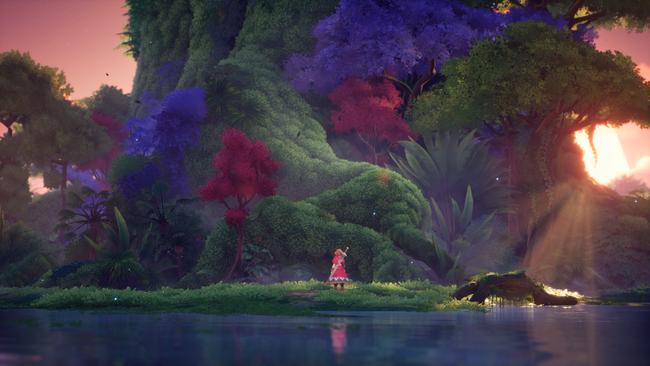
Visions of Mana shows a lot of promise for the future of one of Square’s scrappiest series. I’m left with a lot of small issues that mean basically nothing to me when thinking of the big picture. While far from perfect, I never expected it to capture my attention so much during the time I had to play through it. I did just about anything there was to offer in this game, and loved most of it. It had a slow start that worried me greatly for the first ten to fifteen hours, but the action-adventure game it blossoms into will probably be one of my favorites of the year. While it could certainly use a bit more polish, I wouldn’t say what it lacks is anything new for the series.
When I think back on my experience in totality, what enraptured me so much about Visions is an innocent worldview in what it has to say and how it says it. There’s an underlying hope that humanity can live in harmony with the nature around them, to bask in the awe-inspiring world we exist in. In addition to that, it’s refreshing to play a game that is so excited to just be itself. Trials of Mana got me to give these games a chance, but Visions made me a fan. There’s so much more room for this series to grow, and I hope they continue to build from here.